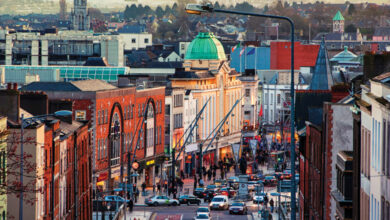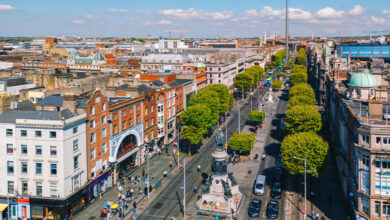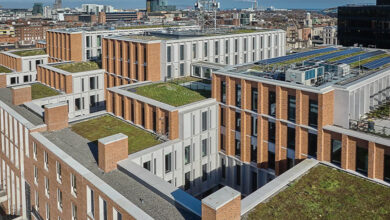Limerick Twenty Thirty: Shaping Ireland’s first city of the future
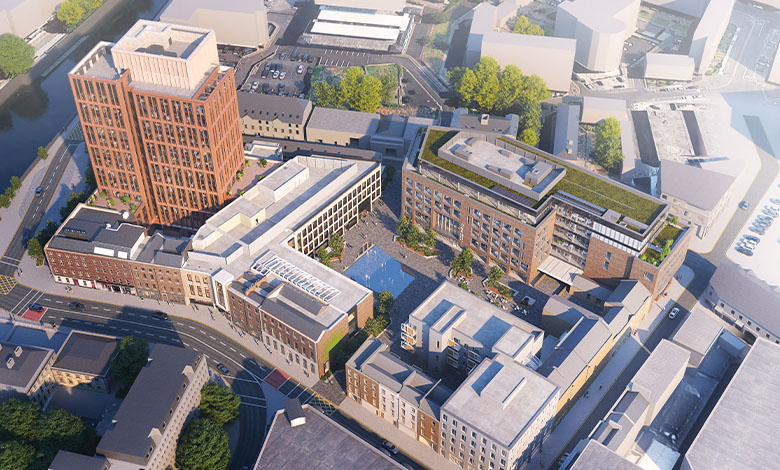
In the global race to reimagine urban working and living, the conundrum facing cities is not only which lane to take but what type of course lies ahead.
In this prevailing environment, where change is perhaps the greatest certainty and one being rapidly accelerated by AI, Limerick is shifting gears, becoming better than it has ever been before, and is ready to compete with all others.
That vision is Limerick 2030: An Economic and Spatial Plan, launched over a decade ago. A first-of-its-kind roadmap in Ireland, laying out a clear, actionable vision for the city’s transformation, the strategy was not merely aspirational; it was a pragmatic blueprint, grounded in revitalisation, economic rebalancing, and urban reinvention.
And it was from that blueprint that Limerick Twenty Thirty DAC emerged, created as Ireland’s first ‘special purpose vehicle’ (SPV) for city transformation. A development body with a singular focus: to deliver landmark infrastructure that would elevate Limerick onto the European investment radar.
And as cities worldwide grapple with the demands of the future – climate resilience, liveability, digital integration, and competitiveness – Limerick Twenty Thirty is a strategic implementation vehicle that is driving an innovation-led transformation of what the city looks and feels like, and, critically, how it delivers economically and socially, setting it apart as a beacon of what a ‘future city’ can be.
What makes Limerick Twenty Thirty extraordinary is its origins in innovation. Formally established in 2016 from the Limerick 2030 Economic and Spatial Plan, from its inception, Limerick Twenty Thirty has embodied entrepreneurial leadership. With innovators and business leaders at the helm, and a dynamic team, the organisation fused public sector purpose with private sector agility, introducing a new model of urban delivery in Ireland.
Rather than merely overseeing development, it has actively curated and catalysed change, identifying opportunities not just for regeneration, but for urban reinvention.
This innovation-first philosophy has been evident step-by-step in how it gathered its team and then brick-by-brick in how it delivered its developments.
The Gardens International project on Henry Street – a revitalisation of a derelict city centre site – was the first significant development undertaken by the company and one that set a whole new standard for office space in Limerick. It was a multi-award-winning statement of intent, blending historic preservation with sustainable design, delivering a high-specification commercial space that retained Limerick’s character while turning it to the future with stunning new sustainability standards and architecture, to enhance the city’s global ambitions.
Now, the Opera Square project is raising the bar again, delivering on Limerick’s 21st century ambition and future-facing ethos. Currently under construction, Opera Square is the largest commercial property development project outside of Dublin, and one of the most advanced in Europe in terms of design, sustainability, and scale.
From carbon targets to digital integration, the project is being delivered to world-class environmental and smart city standards, redefining the benchmarks for regional urban development in Ireland.
The development spans across 3.7 acres in a prime city centre location. The project includes the One Opera Square building, which is nearing completion and is due for launch in September, a 106,000ft2 Grade A office space designed to accommodate up to 1,000 workers.
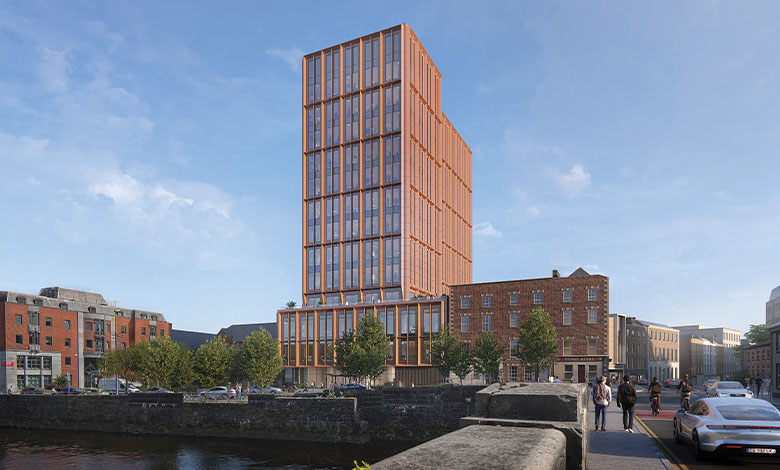
And, in keeping with Limerick Twenty Thirty’s story so far, the One Opera Square project has attracted an innovative investment partnership, with the subsidiary company developing this stunning commercial space, ‘Treaty Stone Partnership’ a coming together of Limerick Twenty Thirty with the Ireland Strategic Investment Fund (ISIF), driven by investment from the latter’s €500 million regional cities programme.
This public-private partnership is emblematic of the strategic thinking underpinning the entire Limerick transformation effort: leverage visionary planning to unlock capital, scale, and long-term impact.
The wider Opera Square development aims to be a regional and national exemplar of innovation and sustainability, delivering significant economic and social impact. It will support up to 3,000 jobs across a vibrant mix of office, retail, and public spaces, including a landmark 14-storey building, a hotel, a new world-class city library, and the redevelopment of the public realm. The scheme also includes the preservation and sensitive redevelopment of 16 heritage buildings, enhancing the amenity of the city and creating an attractive destination for residents and visitors alike.
And there is more on the horizon. Across the river, on the northern banks of the Shannon, the 10 acre Cleeves Riverside Quarter is urban regeneration in motion. Cleeves – planning permission for which will be lodged later this year – is poised to become a mixed-use urban quarter, linking the city’s historic core with its expanding digital and innovation districts. Already, it is underpinned by a €35 million commitment from the Urban Regeneration and Development Fund (URDF), reinforcing confidence in Limerick’s ability to deliver at scale.
The development will harmonise public realm, culture, business, educational, and residential elements – creating a model for human-centred city design that is increasingly vital to retaining and attracting young, mobile talent in a competitive European landscape.
It also reflects how Limerick Twenty Thirty is evolving to meet needs. Whereas Opera Square was primarily commercially focused to act as an economic catalyst to attract investment and people to work in the city centre, Cleeves Riverside Quarter leans heavily into ‘housing’, with 500 residential and student accommodation units.
What distinguishes Limerick Twenty Thirty is its fusion of origin, ambition, innovation, and execution.
It was born from an innovative vision; it has recruited and empowered entrepreneurial leadership; and it is delivering projects that are not just large-scale, but transformative, changing how the city sees itself and how it is seen nationally and internationally.
In many ways, Limerick Twenty Thirty is a template for other cities. Indeed, the greatest tribute to it is that other urban centres are now seeking to replicate its formula. That formula is creatively navigating the complex challenges of post-pandemic urban development, regional rebalancing, and climate transition. Its mix of ‘first-of-its-kind governance’, world-class project execution, and future-focused strategic planning makes it not just an Irish success story, but a European one.
Critically, its projects are more than real estate investments. They are strategic assets that will attract foreign direct investment, create high-quality employment, delivering sustainable, inclusive urban environments. And position Limerick as a serious competitor in the race to be a European leader in working and living.
Limerick is not waiting for the future; it is building it. With bold vision, innovative leadership, and transformative projects, Limerick Twenty Thirty is lighting the way forward.
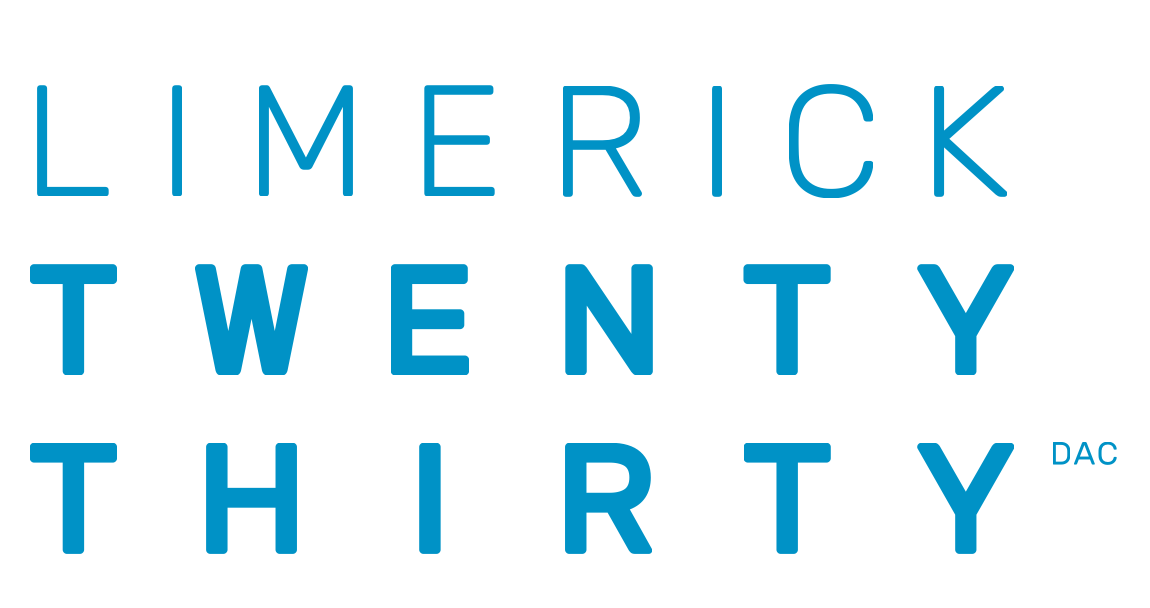
W: www.limerick2030.ie


